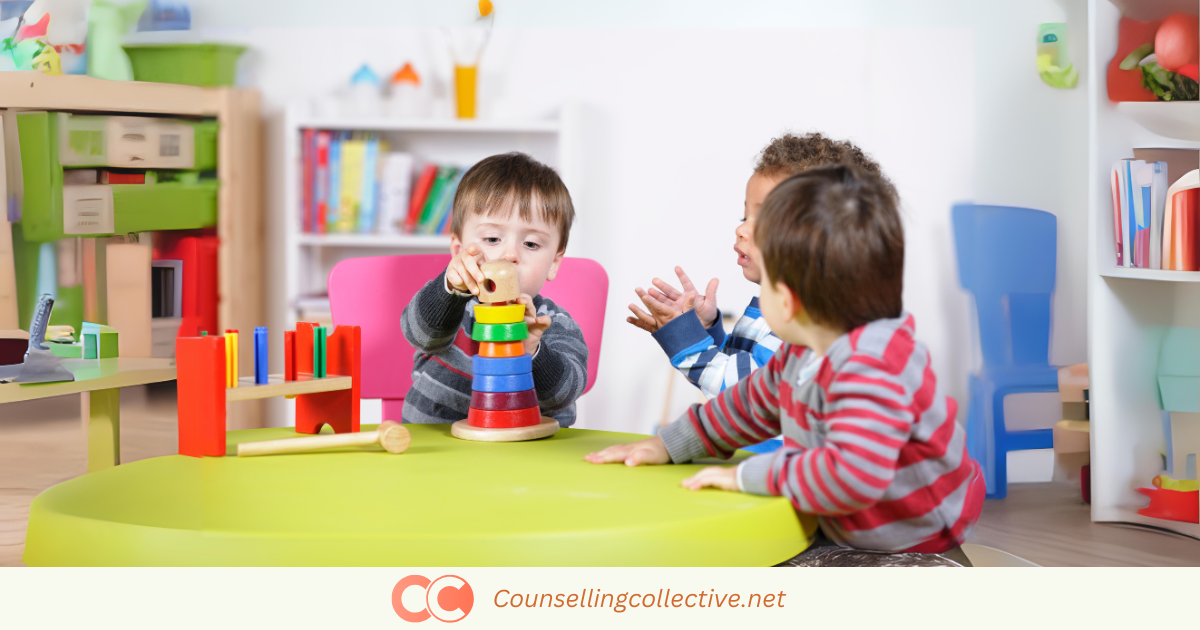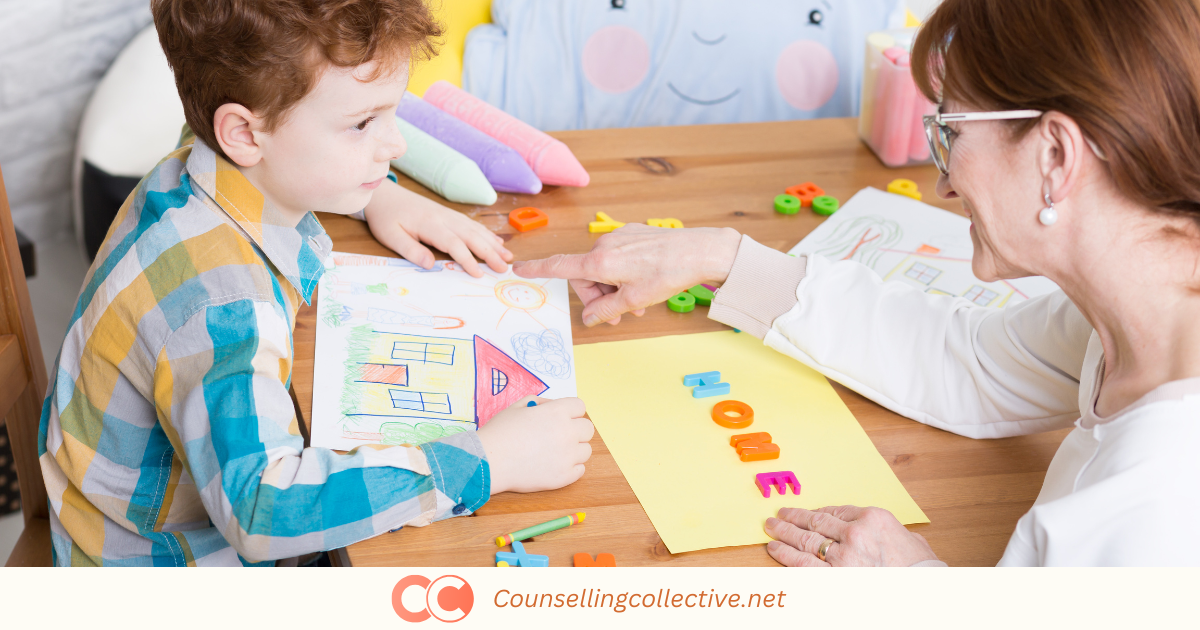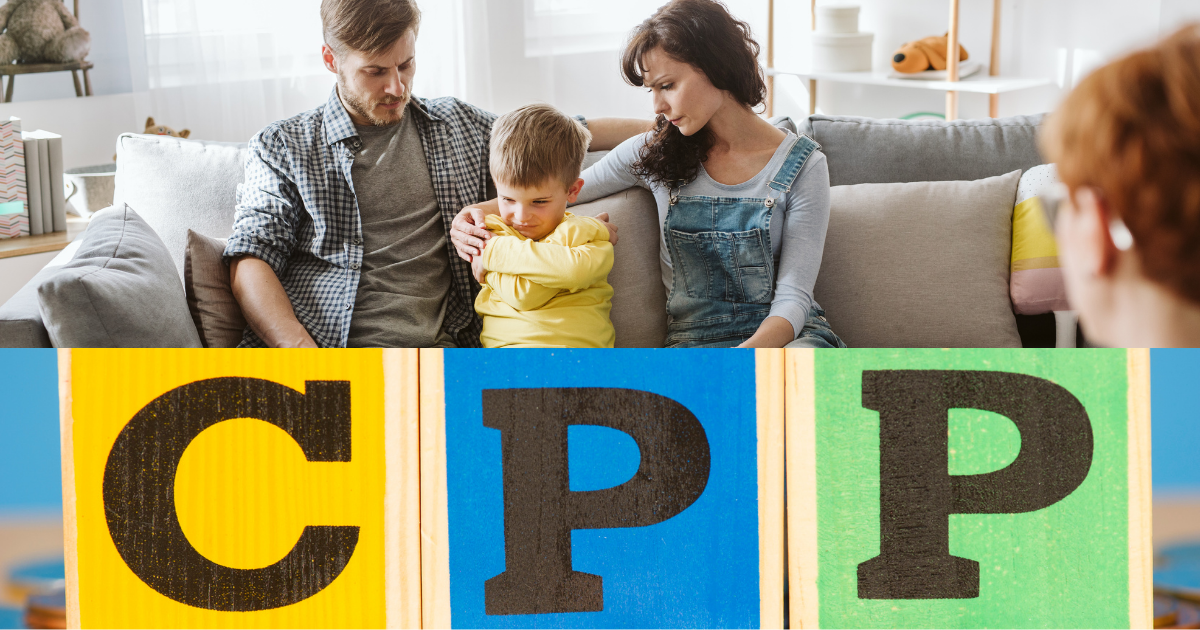Contents
Introduction
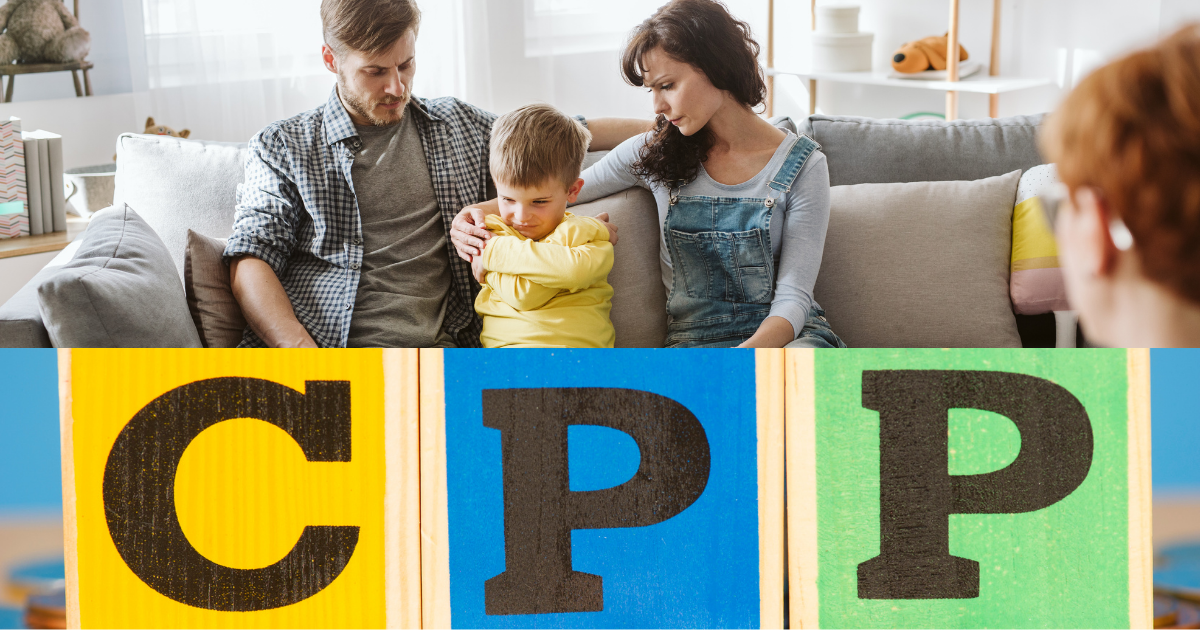
Child-Parent Psychotherapy (CPP) – Techniques, Applications, and Effectiveness
CPP is a relationship-based intervention aimed at children aged 0 to 5 who have experienced trauma, such as abuse, neglect, or domestic violence. It is designed to restore the child-caregiver relationship, which often suffers after traumatic events. CPP integrates the caregiver into therapy sessions, focusing on repairing the emotional bond and fostering a sense of safety for the child. By helping caregivers understand their child’s emotional and behavioral responses to trauma, CPP promotes healing and healthy emotional development.
This article explores the foundational principles of CPP, reviews its techniques, examines its applications, and evaluates its effectiveness. Additionally, the article will address common misconceptions and criticisms of CPP while underscoring its relevance in the treatment of trauma and relationship repair.
What is Child-Parent Psychotherapy (CPP)?
Child-Parent Psychotherapy (CPP) is a specialized therapeutic approach focused on helping children and their caregivers recover from trauma and strengthen their emotional bonds. Developed by Alicia Lieberman and Patricia Van Horn, CPP merges principles from attachment theory, developmental psychology, and trauma-informed care. The therapy aims to restore and enhance the secure attachment between the child and caregiver, which is crucial for the child’s emotional healing and development. CPP involves both the child and caregiver in the therapeutic process, using techniques such as dyadic play therapy, trauma narratives, and attachment repair to address the impact of trauma and promote healthy, supportive relationships.
(CPP) is a widely recognized treatment approach within foster and adoptive parenting communities due to its effectiveness in addressing early disruptions in the caregiver-child bond. Dr. Jennifer Weber, PsyD, Director of Behavioral Health at PM Pediatrics Behavioral Health, notes that CPP is frequently recommended following instances of childhood trauma.
While it can also be beneficial for various other childhood mental health issues, such as behavioral problems and high family conflict,” Weber explains, “the core principle of CPP is the focus on the child’s attachment to their primary caregiver, typically the mother.
Weber outlines the primary goals of CPP as follows:
- Strengthening the attachment between the child and their parent
- Enhancing the overall mental health of both the child and the parent
- Equipping both the child and the parent with effective coping skills
- Increasing the sense of safety and security within the child-parent relationship
Why CPP is Important?
CPP is essential because early childhood trauma can significantly disrupt a child’s emotional and cognitive development. By intervening early, CPP prevents the long-term effects of trauma and enhances the child’s ability to form secure attachments. The inclusion of caregivers in therapy helps children heal in the context of their most important relationships, fostering resilience and emotional stability. CPP is also effective in addressing intergenerational trauma, supporting both the child and the caregiver in breaking cycles of adversity.
Real-Life Example: A 4-year-old girl who has witnessed domestic violence is referred to CPP. In therapy, the therapist employs dyadic play sessions involving both the girl and her mother, creating opportunities for them to express and process their emotions collaboratively. This process includes guiding the mother in understanding her child’s emotional needs and helping both mother and child rebuild trust and a sense of safet.
Core Concepts
- Attachment Security: CPP focuses on restoring and strengthening secure attachments between children and caregivers, which are fundamental for healthy emotional development. These secure relationships provide children with a stable base, helping them build resilience and manage their emotions effectively, especially after experiencing trauma. By reinforcing the caregiver-child bond, CPP supports the child’s emotional growth and ability to navigate challenges.
- Trauma-Informed Practice: CPP integrates trauma-focused interventions that address the profound emotional and behavioral effects of trauma on both children and caregivers. This approach involves understanding the impact of trauma on the individual’s emotional responses and behavior. By working through these trauma-related issues together, CPP facilitates mutual healing, fostering a supportive environment where both child and caregiver can overcome past adversities and strengthen their relationship.
- Intergenerational Trauma: CPP acknowledges that unresolved trauma in caregivers can influence their parenting practices and affect their child’s development. The therapy addresses this by focusing on both the caregiver’s and the child’s traumatic experiences. By confronting and healing past traumas, CPP helps to disrupt the cycle of intergenerational trauma, promoting healthier family dynamics and ensuring a more positive environment for the child’s growth and development.
Techniques Used In CPP
- Safe-Space Creation: This technique involves setting up a calm, supportive environment where children and caregivers can openly share their thoughts and feelings. It helps them feel secure and less threatened, which is essential for effective trauma processing. The environment is designed to be free of judgment, promoting open communication. It provides a foundation for building trust and emotional safety.
- Play Therapy: This approach uses play as a medium for children to express their emotions and experiences in a non-verbal way. Through play, children can explore and communicate complex feelings that might be difficult to verbalize. The therapist observes and interprets the child’s play to understand their inner world and address their emotional needs. It also helps children develop coping strategies in a natural and engaging manner.
- Reflective Listening: This technique involves caregivers listening with full attention and empathy to their child’s expressions. Caregivers reflect back what the child has said, validating their feelings and showing understanding. This process helps build a stronger emotional connection and allows children to feel heard and understood. It also guides caregivers in responding more effectively to their child’s needs.
- Role-Playing: In role-playing, children and caregivers act out various scenarios to explore emotions and practice problem-solving skills. This technique helps children process their feelings by allowing them to reenact and reframe challenging situations. It provides a safe space to experiment with new behaviors and coping strategies. Role-playing also facilitates discussion and reflection on emotions and responses.
- Therapeutic Play: Structured play activities are designed to address specific emotional conflicts and enhance therapeutic outcomes. This approach allows children to engage in creative activities that facilitate expression and resolution of their issues. Therapeutic play helps children gain insight into their emotions and experiences in an engaging way. It also supports skill development and emotional regulation.
Notable Figures in CPP
Alicia Lieberman: Co-developer of CPP, Alicia Lieberman focuses on trauma in early childhood and the role of secure caregiver-child relationships in healing. Her work integrates trauma theory with practical therapy techniques for young children. Lieberman’s research emphasizes the importance of caregiver involvement in the therapeutic process for effective trauma recovery.
Patricia Van Horn: Co-developer of CPP with Alicia Lieberman, Patricia Van Horn blends trauma theory with child development and attachment models. Her contributions have shaped CPP’s approach to supporting families through trauma. Van Horn’s work highlights the integration of developmental and attachment-based strategies in addressing trauma’s impact.
John Bowlby: John Bowlby’s attachment theory, though not directly tied to CPP, significantly influences its focus on caregiver-child bonds. His concepts of secure attachment are foundational to CPP’s therapeutic approach. Bowlby’s theories underpin the importance of nurturing secure relationships in promoting emotional resilience.
Mary Ainsworth: Mary Ainsworth’s research on attachment patterns informs CPP’s emphasis on secure attachments and caregiver responsiveness. Her work helps therapists foster healthy attachment relationship,
John Bowlby- Image Source: psychiatry.ucsf.edu
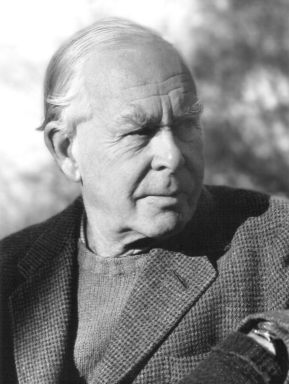
Theories Influenced by CPP
- Attachment Theory: CPP builds on Attachment Theory by emphasizing the importance of secure caregiver-child bonds. It helps repair attachment disruptions and fosters secure relationships through therapeutic interventions.
- Cognitive Behavioral Therapy (CBT): CPP complements CBT by addressing the emotional and relational factors underlying behavioral issues. While CBT focuses on changing thought patterns, CPP integrates relational and attachment work to support overall emotional healing.
- Narrative Therapy: Narrative Therapy is influenced by CPP’s emphasis on understanding and reauthoring relational experiences. Both therapies use storytelling to help individuals make sense of their experiences and reshape their relationships.
- Play Therapy: CPP incorporates principles from Play Therapy by using play to facilitate emotional expression and attachment repair. Both approaches use therapeutic play to support emotional and relational healing.
- Trauma-Focused Cognitive Behavioral Therapy (TF-CBT): TF-CBT integrates CPP principles by addressing trauma through a relational lens. Both therapies use therapeutic techniques to help children and caregivers process trauma and strengthen their bond.
Applications of CPP

Trauma Recovery
CPP effectively supports trauma recovery by creating a secure environment to process and heal from traumatic experiences. Trauma often disrupts the caregiver-child bond, leading to emotional difficulties. CPP helps both the child and caregiver address and process these experiences, strengthening their relationship.
Example: A child exposed to domestic violence feels fearful. In CPP, the therapist uses safe-space creation and play to help the child and caregiver express their feelings. As the caregiver provides consistent emotional support, the child feels safer, improving emotional stability and bonding.
Image Source: presence.com
CPP addresses attachment disorders by enhancing caregiver sensitivity and fostering secure attachment. The therapy helps caregivers understand and meet their child’s attachment needs, promoting a secure and supportive relationship.
Example: A child with insecure attachment shows clinginess. CPP helps the caregiver learn responsive behaviors through techniques like reflective listening. As the caregiver becomes more attuned, the child’s sense of security and attachment improves.
Image Source: helpguide.org
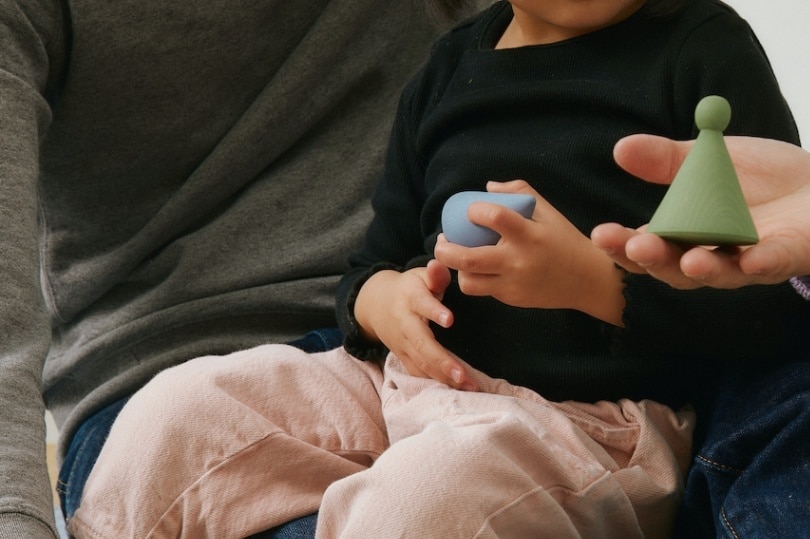
Attachment Issues

Behavioral and Emotional Problems
CPP helps with behavioral and emotional issues by addressing underlying emotional conflicts related to trauma or relationship disruptions. It aids in resolving these issues by focusing on emotional support and relationship-building.
Example: A child with behavioral problems and anxiety expresses distress. CPP uses role-playing and therapeutic play to help the child process emotions. The caregiver learns to offer consistent support, reducing the child’s behavioral issues and anxiety.
Image Source: locusassignments.com
Common Myths About CPP
| Myth | Reality |
| CPP is only for severe trauma cases. | Although CPP is well-known for its effectiveness in addressing severe trauma, it can also be beneficial for less extreme emotional and behavioral issues. CPP’s approach is versatile, helping with various challenges by focusing on strengthening the child-caregiver bond and supporting emotional resilience. |
| CPP only focuses on the child’s behavior. | CPP emphasizes the emotional and relational dynamics between the caregiver and the child. It doesn’t just address behavior but helps both parties explore their feelings, fears, and attachment, working to repair and enhance the emotional connection at the core of their relationship. |
| CPP can be done without the caregiver. | The caregiver’s involvement is essential in CPP. The therapy is built on the idea that healing occurs through the attachment relationship, making the caregiver’s participation a vital part of the process. It helps both the child and the caregiver understand and respond to each other’s emotional needs. |
| CPP is only for very young children. | While CPP is particularly effective for infants and young children, it can be used with children up to age five and even beyond. The principles of attachment and relational healing that CPP is based on are applicable in a range of developmental stages, making it useful for various age groups. |
Criticisms of CPP
- Length of Treatment: CPP often requires a longer time commitment compared to other therapeutic approaches, with treatment sometimes lasting up to a year or more. This extended duration can pose significant challenges for families who may have limited time, financial resources, or access to transportation. The necessity for consistent attendance in sessions may further strain families already facing logistical or socioeconomic difficulties, potentially impacting the overall effectiveness and feasibility of the intervention.
- Cultural Sensitivity: Critics of CPP argue that the therapy may not always fully account for cultural differences in caregiving practices and attachment styles. Since CPP is deeply rooted in Western models of attachment, it may not be as adaptable to the values and norms of families from diverse cultural backgrounds. This limitation could affect the therapy’s applicability and effectiveness for families whose caregiving approaches differ from the therapeutic assumptions embedded in CPP.
- Accessibility: CPP requires therapists to undergo specialized, extensive training, which can limit access to the intervention, particularly in under-resourced areas where trained practitioners are scarce. This lack of accessibility is especially problematic in communities where the need for trauma-informed care is high, but where few professionals are available to deliver CPP. The scarcity of trained therapists can create barriers for families seeking this form of intervention, reducing its reach and potential impact.
Conclusion
Child-Parent Psychotherapy (CPP) offers a powerful and evidence-based intervention for children and caregivers impacted by trauma, helping to rebuild and strengthen the emotional bond between them. By focusing on this crucial attachment, CPP fosters not only emotional healing but also the healthy psychological and social development of the child. Through this relationship-based approach, children are given the opportunity to process their trauma in a secure, supportive environment, while caregivers are guided to respond to their child’s emotional needs in ways that promote resilience. Although CPP faces criticisms regarding accessibility, particularly in under-resourced communities, and challenges related to cultural adaptability, it continues to evolve as an inclusive and effective therapeutic model.
References
- Lieberman, A. F., Van Horn, P., & Ghosh Ippen, C. (2015). Don’t hit my mommy! A manual for child-parent psychotherapy with young witnesses of family violence. Zero to Three Press.
- Ghosh Ippen, C., Harris, W. W., Van Horn, P., & Lieberman, A. F. (2011). Trauma and stress in early childhood: Addressing effects through CPP. Child Abuse & Neglect, 35(7), 504-513.
- Lieberman, A. F., & Van Horn, P. (2008). Psychotherapy with infants and young children: Repairing the effects of stress and trauma on early attachment. Guilford Press.
- Toth, S. L., & Lieberman, A. F. (2010). Infant–parent psychotherapy: Attachment-based interventions for trauma recovery. Guilford Press.
- Cicchetti, D., & Toth, S. L. (Eds.). (2009). The effects of trauma on early childhood development. Cambridge University Press.
- Van Horn, P., & Lieberman, A. F. (2006). CPP and trauma-focused therapy for young children. Journal of Traumatic Stress, 19(5), 699-706.
- Lieberman, A. F., & Knorr, K. (2007). The impact of trauma on attachment and caregiving. Infant Mental Health Journal, 28(3), 217-230.
- Scheeringa, M. S., & Zeanah, C. H. (2001). A relational perspective on PTSD in young children: Contributions of Child-Parent Psychotherapy. Journal of the American Academy of Child & Adolescent Psychiatry, 40(4), 376-383.
- Fonagy, P., & Target, M. (2003). Attachment theory and CPP: Addressing trauma in the parent-child dyad. Routledge.
- Zeanah, C. H. (Ed.). (2009). Handbook of infant mental health (3rd ed.). Guilford Press
Explore more Theories & Therapies

